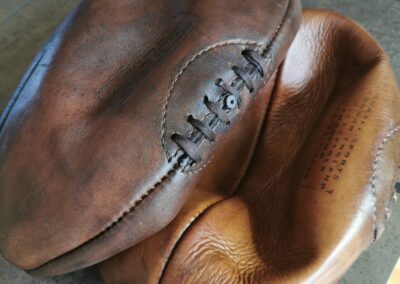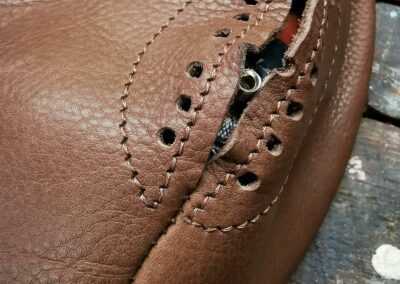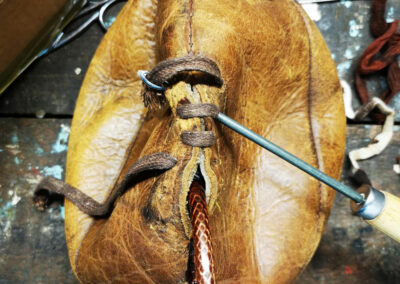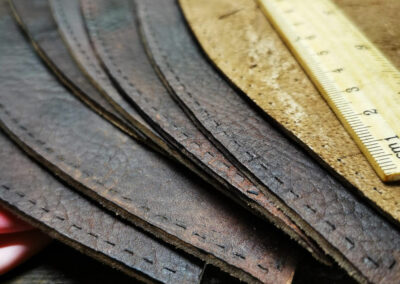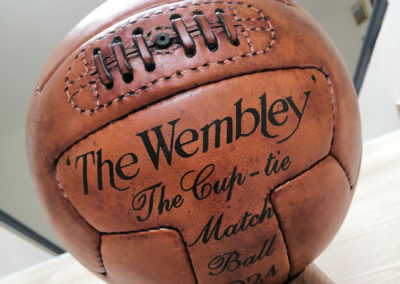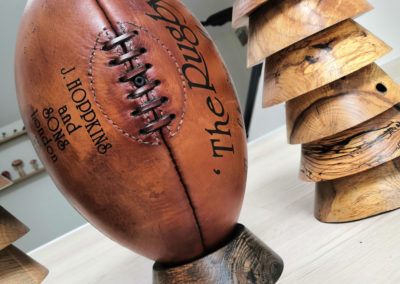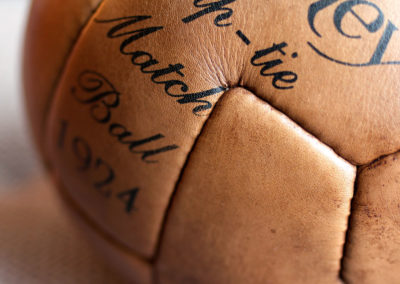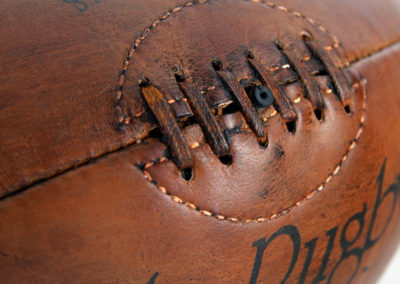Vegetable or mineral tanning? Ben and Flo know the difference.
There is one subject that few leatherworkers dare to tackle and that is the tanning of their leather. Is it better to have vegetable or mineral tanning? Yet it makes all the difference. A vegetable tanning has nothing to do with a mineral chrome tanning that most of our competitors offer. At Ben et Flo, we try to be different and this starts with the choice of our raw material for our vintage sportswear: leather.
What is vegetable tanning?
Vegetable tanning is an age-old, time-consuming process that was used in the past to remove hair from animal skins and to clean the leather of any living matter that might impair its quality. The hide is then transformed into leather by means of tanning.
For this purpose, a large number of spices and natural materials are used that are rather “aggressive” over time. This is the case for rather tannic plants such as herbs, barks or certain berries. The ingredients used are therefore bio-degradable, which makes it an environmentally friendly process.
Vegetable tanning gives a rougher leather and preserves its roughness. This process does not erase the imperfections or scratches in the leather of a cow that has rubbed against barbed wire, for example.
In terms of colour, this type of tanning does not fix the colour in the same way as chrome. The palette is also more limited and it is time that will bring the colour to your leather. Basically, your old football will take on its full character with time long after you take it out of the box.
Also, last but not least, a product made with vegetable tanned leather will require more maintenance, for example by nourishing it with ox foot oil, at the risk of seeing it slightly tarnished or bleached.
Vegetable tanning currently represents less than 20% of the world’s leather production and has become “reserved” for the poorest countries. This is a good thing, as these countries offer more authentic leather than the developed countries, which mostly tan with chrome.
Vegetable tanning is also more expensive because it takes much longer, from 48 hours to several weeks on some animal skins. This is another reason why developed countries have abandoned it and it is a pity.
This is why the best compromise is to buy your leather in a country where actors master this process and then make the final product in your workshop.
As you can see, vegetable tanning is the process we use most at Ben et Flo for our leather balls as well as our vintage punching bags and all other antique boxing accessories.
We have already tried French leathers which are softer (we will explain why in the second part) and more noble but we lose the vintage aspect we like and get closer to the handbag effect which we don’t like and which we leave to our competitors.
Now we will talk about another, much better known process for making leather objects.
Chrome tanning of leather
Much smoother, much more standard, much classier, the chrome tanning rendering gives a much newer look to your product.
The colour schemes offer many more possibilities and the colours are better “fixed” over time.
Chemically tanned leather will also be more supple and easier to work with, which is why it is the most widely used leather in the world. It is estimated that 95% of French leather is chrome tanned and 80% worldwide.
As for the process, it is much less glamorous than our vegetable tanning because chrome tanning uses many more chemicals. So our advice is to find out where the leather you are about to buy comes from as it will have a real impact on the environment.
If you don’t know on the label or on the website, there is a good chance that it is chrome tanned.
Be careful not to throw out the bathwater with the baby, some leather goods manufacturers rightly say that French chrome tanned leather is sometimes more environmentally friendly than vegetable tanned leather made on the other side of the world. This is indeed true and it is the reason why French luxury continues to thrive.
However, it will be difficult to find a ball with a vintage look if the leather used is chemically tanned. Only the colour and especially the reflections of the colour can make it vintage if it is well worked. This is the case with our limited edition 1924 rugby ball and the Wembley football. You can clearly see the difference in the look of the leather. Mineral tanning gives a much smoother look with little texture and this is why we prefer screen printing to engraving.
When you are faced with a vintage rugby ball with a very plastic look (we won’t name the brands), you know why 😉 The lower the quality of the leather, the more it is chemically gummed. Only the mastery of colour and patina will allow you to take full advantage of chrome tanning.
The texture of Chrome tanned leather being smoother and softer, you will understand that on some products we don’t really have a choice, this is the case for leather floor mats which must be comfortable and not rough.
Last but not least, mineral tanning erases all aspects of the leather and this is the main reason why we wrote our article “why our vintage sports items are not perfect” on our blog because at Ben et Flo we manufacture by hand and not in a factory and above all the tanning is ancestral since it is vegetable.
